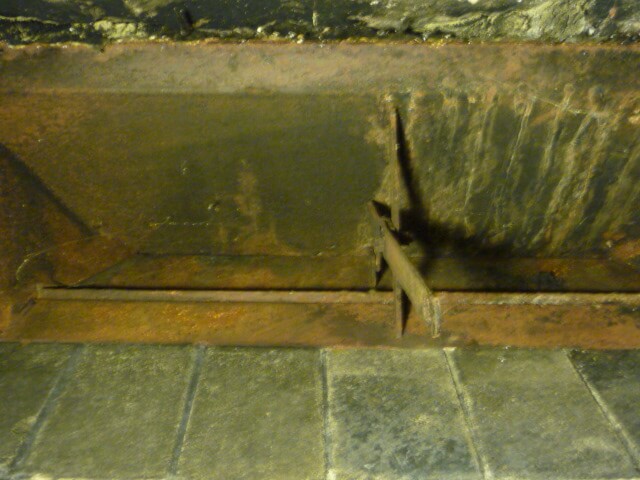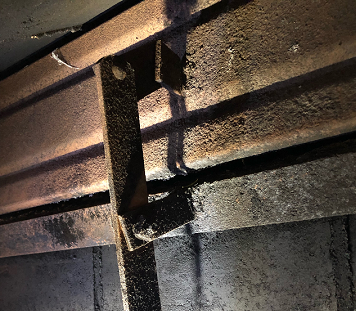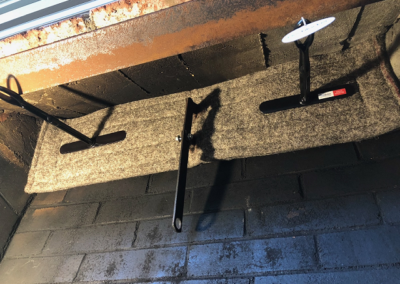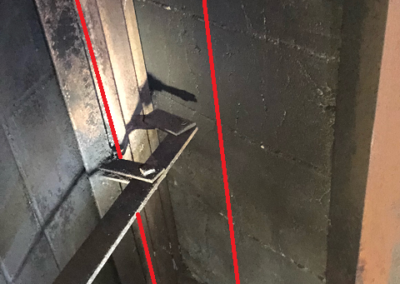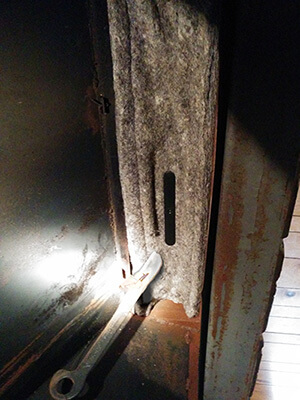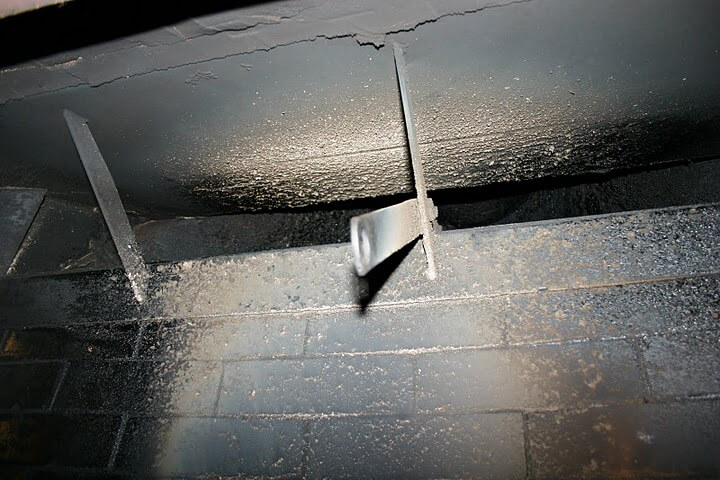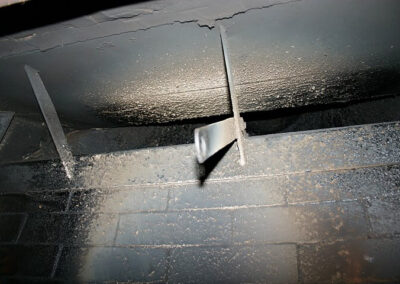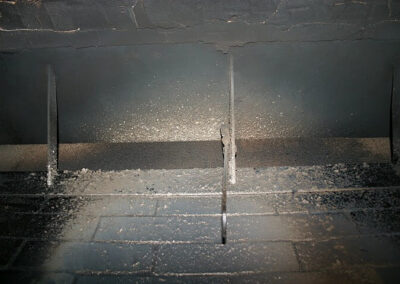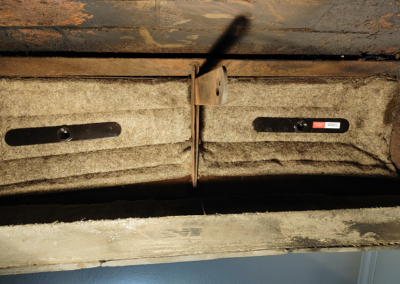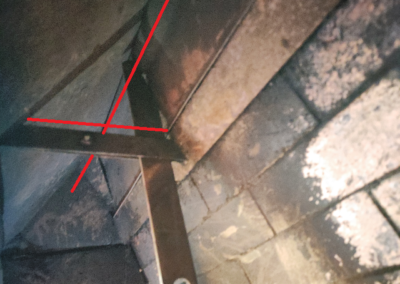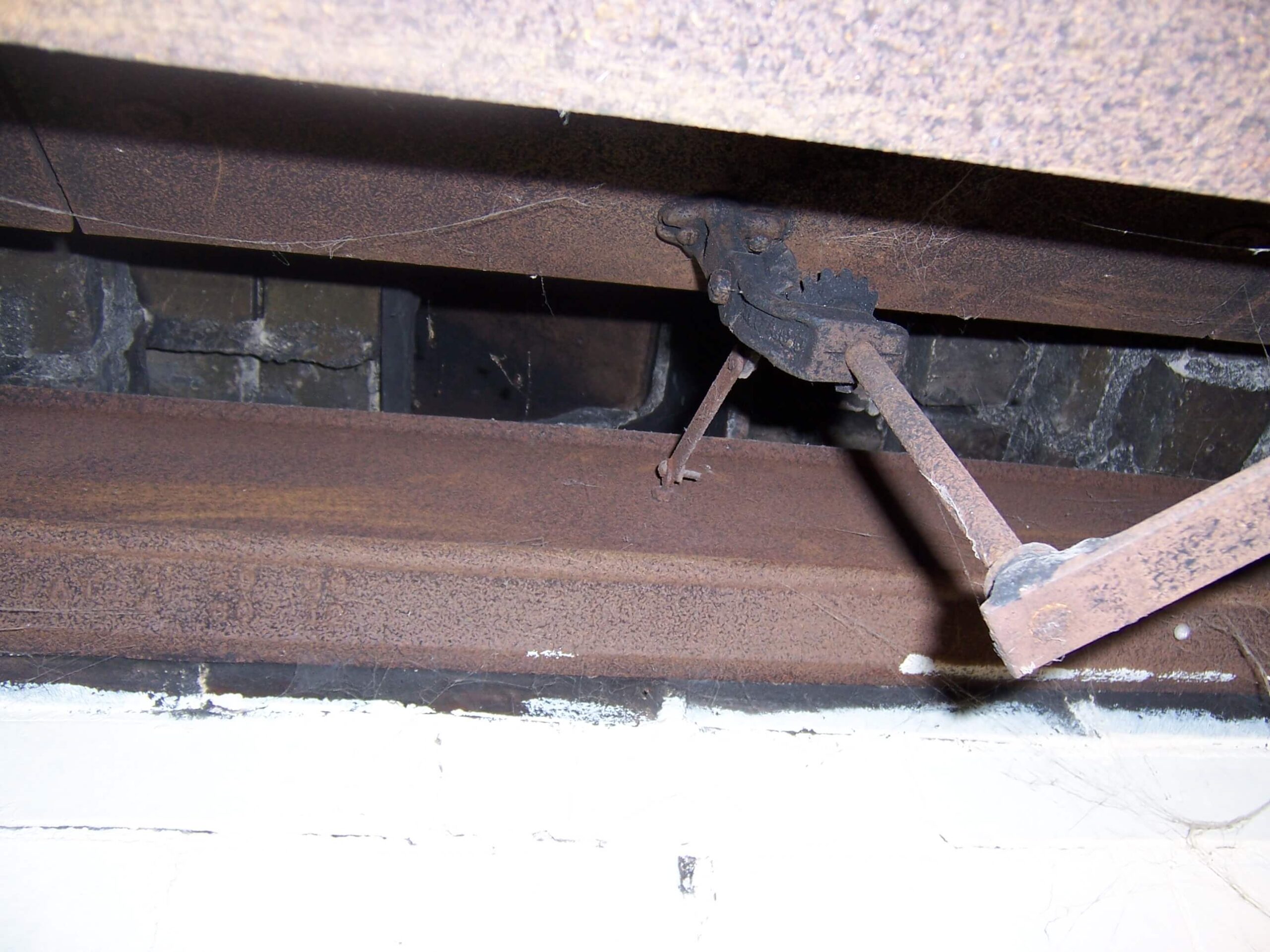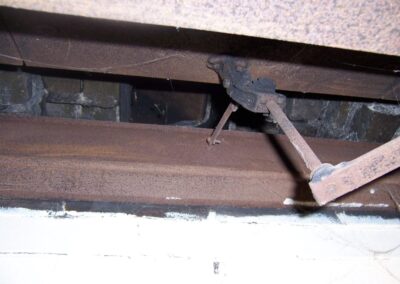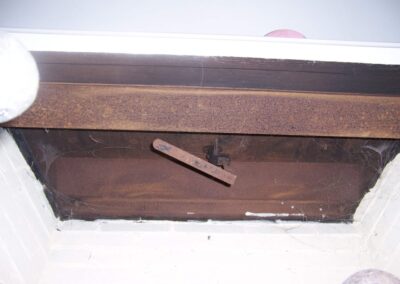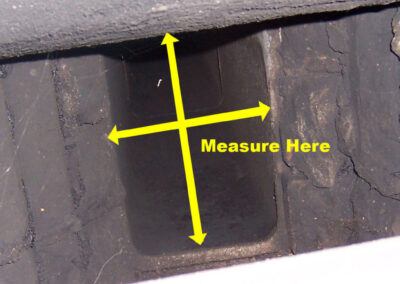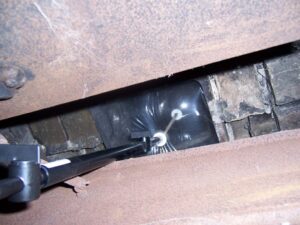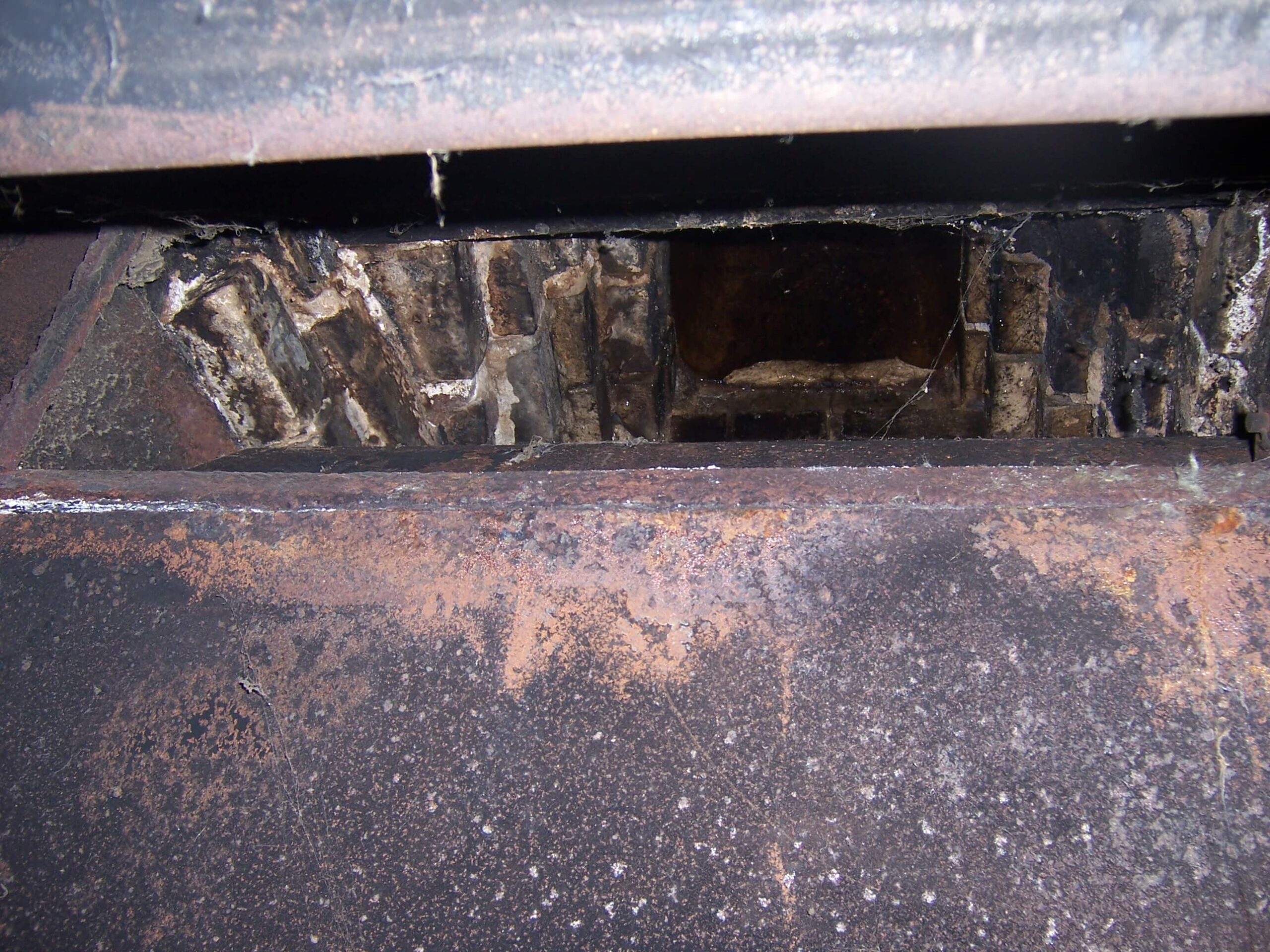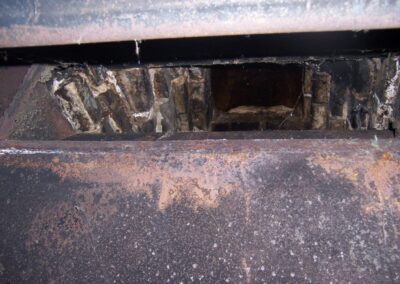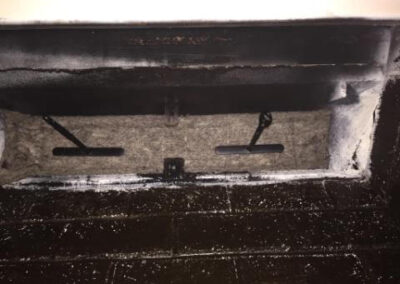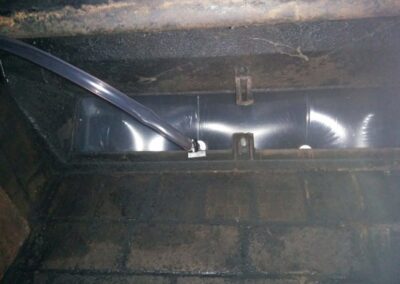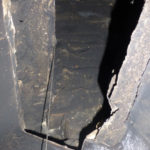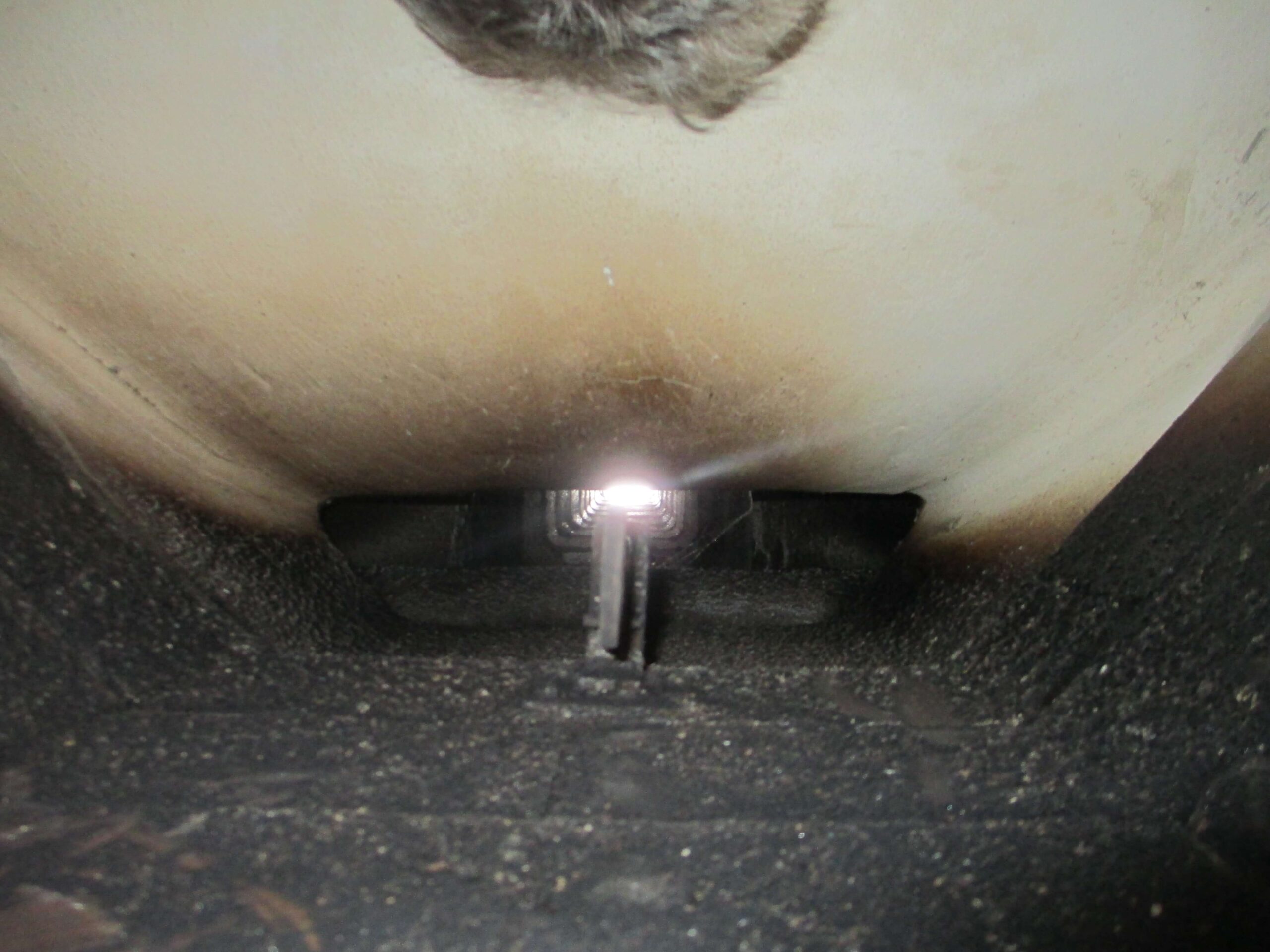
#26: I have a Rumford Fireplace Damper, How Do I Plug the Flue
#26: I have a Rumford Fireplace Damper, How Do I Plug the Flue
Fireplace #26: Rumford Fireplace Damper
These Rumford Dampers are very common in masonry fireplaces of solid brick. These are their characteristics:
- They have a long rectangular cast iron damper door.
- The door has a 16″ long curved cast iron handle sticking down from the center of the damper door. The handle has saw teeth on the back, and a loop on the end.
- The shaft of the handle sticks through a metal bracket (image 26-1)
- The top of the firebox has a tall and tapered throat leading to the damper
- The footprint of the firebox is a very sharply angled trapezoid (image 26-3). So the back of the firebox is not as wide as the front.
The nice thing about these Rumford dampers is they have a long tall taper from the firebox to the damper, and the damper handle is easy to remove. The handle is usually held on with a cotter pin .
To plug it below the damper, use the Flueblocker
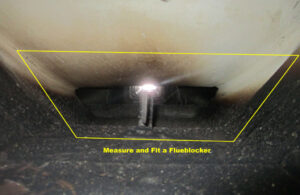 The Flueblocker can be easily fit into the area below the damper. It seals and insulates very well. You will have to remove the damper handle, or cut a slot in the Flueblocker to accommodate the handle, to fit the Flueblocker into the throat that leads to the damper. When you order a Flueblocker make sure it is at least as big as your largest measurements of the trapezoid. (see area marked in yellow)
The Flueblocker can be easily fit into the area below the damper. It seals and insulates very well. You will have to remove the damper handle, or cut a slot in the Flueblocker to accommodate the handle, to fit the Flueblocker into the throat that leads to the damper. When you order a Flueblocker make sure it is at least as big as your largest measurements of the trapezoid. (see area marked in yellow)
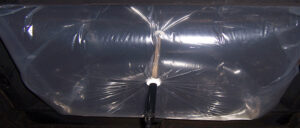 What about the Chimney Balloon?
What about the Chimney Balloon?
The Chimney Balloon can work well in this application. It generally installs into the exact same spot the Flueblocker would go. But keep in mind a Chimney Balloon will be about 8″ tall when inflated. (see image on the left) It gives you a very tight seal, however it is an inflatable. So it is not as durable as the other options. And it requires a top-off on air every 6 to 12 months because of the swings in outside air temperature.
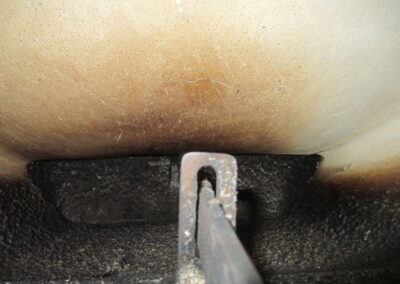
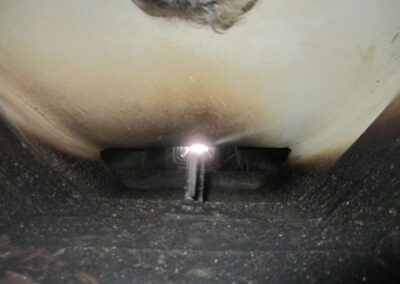
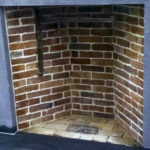
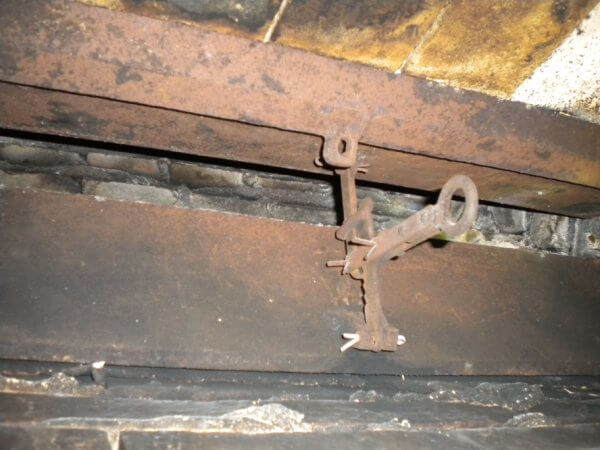
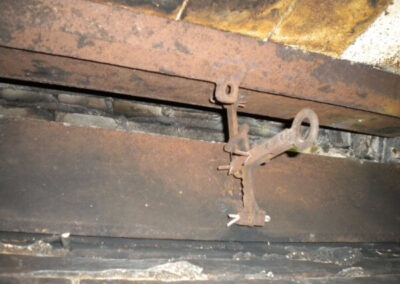
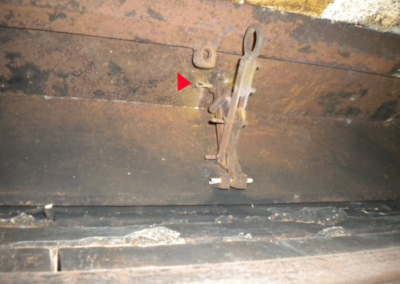
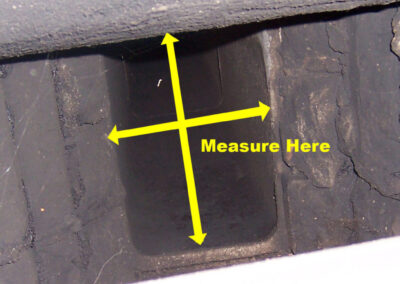
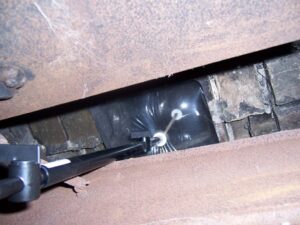 If you are lucky enough to have a low flue tile like this photo, you can use a
If you are lucky enough to have a low flue tile like this photo, you can use a 